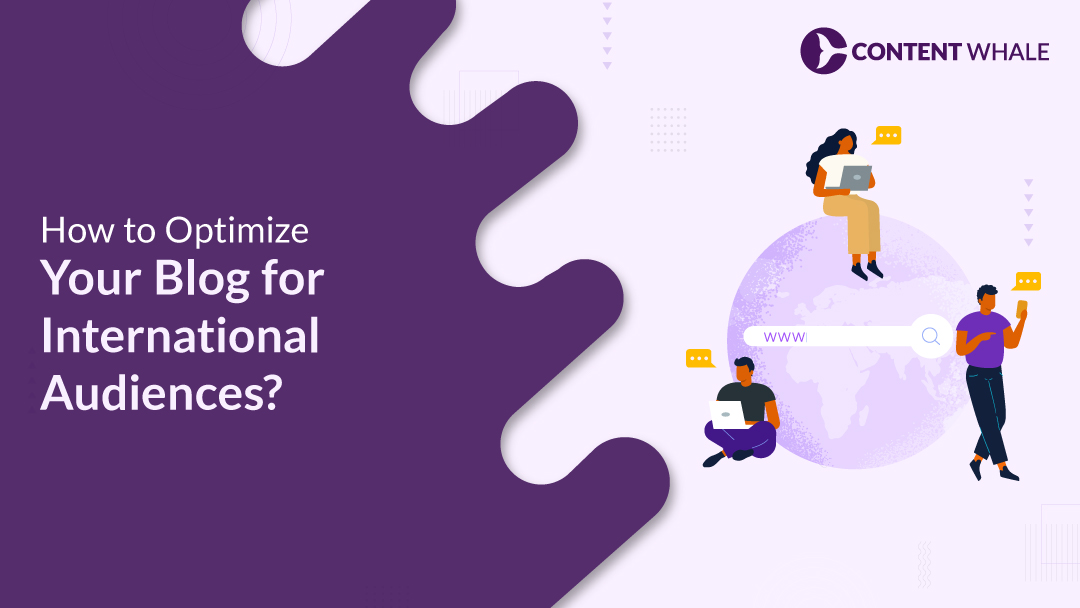Reaching a global audience has become more important than ever for bloggers who want to grow their influence and readership. As more people connect online from various parts of the world, understanding how to optimize blog content for different regions is essential.
This is where international blog SEO comes into play. By focusing on effective SEO tips tailored for a global reach, bloggers can ensure their content resonates across borders.
This blog will provide actionable strategies to help you attract and engage international readers by improving your blog’s visibility in multiple languages and regions.
1. Understanding International SEO
International blog SEO is essential for reaching a diverse global audience. Here’s a breakdown of the key elements involved:
a) Multilingual Content
- Creating multilingual content means offering your blog in various languages. However, it’s more than just translating text.
- Effective multilingual content requires cultural relevance, ensuring your content resonates with local readers.
- This approach directly supports your audience targeting efforts, making your blog more appealing to non-English speakers.
b) Hreflang Tags
- Hreflang tags are HTML attributes that guide search engines in showing the correct language version of your content to users based on their location and language preferences.
- Proper implementation of these tags prevents duplicate content issues and ensures that the right audience sees the right content, boosting your global SEO.
c) Global Keyword Research
- Conducting thorough global keyword research is crucial. Keywords that perform well in one region may not work in another due to language differences, cultural nuances, and local search behaviors.
- By identifying and using region-specific keywords, you can significantly improve your blog’s visibility and search engine ranking in different countries.
d) Cultural Localization
- Cultural localization involves tailoring your content to align with the cultural norms and preferences of different regions.
- This might include adjusting the tone, visuals, or even the topics you discuss.
- Effective cultural localization enhances your blog’s appeal to a global audience, leading to increased international traffic and engagement.
2. Key Strategies for Optimizing Your Blog for International Audiences
To implement effective international blog SEO, consider these key strategies:
a) Multilingual Content Creation
- Broaden Your Reach: Offer your blog in multiple languages to connect with a wider audience.
- Quality Translations Matter: Avoid direct translations. Use native speakers or professional translation services to ensure your content resonates with the target audience.
- Audience Targeting: Properly translated and localized content enhances engagement and attracts readers from different regions.
b) Implementing Hreflang Tags
- Purpose of Hreflang Tags: These tags help search engines show the right language or regional version of your content to users, avoiding duplicate content issues.
- Boost Global SEO: Correct implementation ensures that your blog appears in relevant search results worldwide, enhancing visibility and relevance.
c) Conducting Global Keyword Research
- Understand Regional Differences: Different regions use different keywords, even for the same topic.
- Use the Right Tools: Utilize tools like Google Keyword Planner and SEMrush to identify and integrate region-specific keywords into your content.
- Enhance Local Search Visibility: By tailoring your keywords to each region, you improve your blog’s ranking in local search results.
d) Cultural Localization
- Beyond Language: Adjust your content to align with local customs, values, and interests.
- Adapt Imagery and Tone: Tailor visuals and tone to match cultural expectations, increasing reader connection and engagement.
- Drive International Traffic: Effective cultural localization makes your blog more appealing to global audiences, leading to increased international traffic.
3. Technical SEO Considerations for International Blogs
To ensure your international blog SEO efforts are successful, addressing technical SEO is crucial. Here are key considerations:
a) Website Structure
- Subdirectories vs. Subdomains: Decide whether to use subdirectories (e.g., example.com/fr) or subdomains (e.g., fr.example.com) for your international content. Subdirectories are generally easier to manage and share domain authority, while subdomains might be beneficial for targeting specific regions.
- ccTLDs (Country-Code Top-Level Domains): If you want to target a specific country, using a ccTLD (e.g., example.fr) can provide a strong local signal to search engines, enhancing your global SEO strategy.
b) Mobile Optimization
- Mobile-First Indexing: Google uses mobile-first indexing, meaning your mobile site needs to be as optimized as possible. Ensure your site is responsive and performs well on mobile devices, as mobile usage varies globally, impacting your audience targeting.
- Page Speed and User Experience: Fast-loading pages and a smooth user experience are crucial for retaining international visitors, who may have varying internet speeds and device capabilities.
c) Monitoring and Analyzing International Traffic
- Google Analytics Setup: Use Google Analytics to track and analyze your international traffic. Set up filters by language and region to get insights into how different audiences interact with your blog.
- Identify Opportunities: Analyze metrics such as bounce rate, session duration, and conversion rates for each region. These insights can help you adjust your SEO tips and strategies to better cater to your global audience.
4. Measuring Success and Adjusting Your Strategy
To maximize the impact of your international blog SEO efforts, it’s essential to track performance and refine your strategy continuously. Here’s how:
a) Key Metrics to Track
- Organic Traffic: Monitor the growth of international traffic to your blog. Pay attention to the regions and languages that drive the most visitors.
- Bounce Rate: A high bounce rate in specific regions may indicate that your content isn’t resonating with local audiences or that your site’s loading speed is insufficient.
- Conversion Rates: Track how well your content converts across different regions. Whether it’s newsletter sign-ups, product purchases, or other actions, conversion rates will help you gauge the effectiveness of your audience targeting.
b) Analyzing and Adjusting
- Google Analytics Insights: Use tools like Google Analytics to segment data by language, region, and device. This allows you to identify trends and make informed adjustments to your global SEO strategy.
- Adjusting Your Content: If you notice that certain regions underperform, revisit your multilingual content or cultural localization efforts. Small tweaks in tone, keyword usage, or even the content format can significantly improve engagement.
c) Continuous Optimization
- Stay Updated on SEO Trends: SEO tips and best practices evolve, especially in the context of international blog SEO. Regularly update your strategy to incorporate the latest trends and algorithm changes to maintain and grow your global reach.
| Tool Name | Purpose | Key Features | Best For |
| SEMrush | Comprehensive SEO tool for keyword research and competitor analysis | Global keyword research, SEO audit, position tracking | Global SEO and keyword research |
| Google Keyword Planner | Keyword research tool by Google | Regional keyword insights, search volume trends | Finding relevant keywords for global SEO |
| Yoast SEO | WordPress plugin for on-page SEO optimization | Multilingual support, hreflang tags, content optimization | Optimizing blog content for search engines |
| Ahrefs | SEO tool for backlink analysis and keyword research | International backlink analysis, keyword explorer | Tracking international traffic and backlinks |
| Google Analytics | Web analytics tool for tracking website performance | Audience segmentation, geo-targeting insights | Measuring success of international SEO efforts |
Conclusion
Optimizing your blog for an international audience is essential for expanding your reach and connecting with readers worldwide. By focusing on international blog SEO strategies like multilingual content, hreflang tags, and cultural localization, you can effectively engage diverse audiences.
Regularly monitoring your global SEO performance and adjusting your approach ensures continuous growth and relevance. Start implementing these SEO tips to attract more international traffic and build a global presence. If you need expert assistance, Content Whale offers services tailored to help you create and optimize blog content that resonates across cultures and regions.
FAQs
1. What is international blog SEO, and why is it important for my blog?
International blog SEO involves optimizing your blog to rank well in search engines across different countries and languages. It’s essential for expanding your reach and connecting with a global audience, allowing your content to be accessible and relevant in various regions.
2. How can I ensure my blog is accessible to different language speakers?
Creating multilingual content is key. Translate your blog into the languages spoken by your target audiences, and use hreflang tags to signal the correct language version to search engines. This helps your blog appear in relevant searches for different language speakers.
3. What are hreflang tags, and how do they help in international SEO?
Hreflang tags are HTML attributes that tell search engines which language and regional version of your content to show to users. Proper implementation prevents duplicate content issues and ensures that your blog reaches the right audience in the right language.
4. How do I conduct keyword research for different regions?
Global keyword research involves identifying search terms that are popular in specific regions. Use tools like Google Keyword Planner to find and incorporate these keywords into your content, ensuring it ranks well in local search results.
5. How can I measure the success of my international SEO efforts?
Track key metrics like international traffic, bounce rates, and conversion rates using tools like Google Analytics. Regularly analyze this data to refine your global SEO strategy and improve your blog’s performance in different regions.





